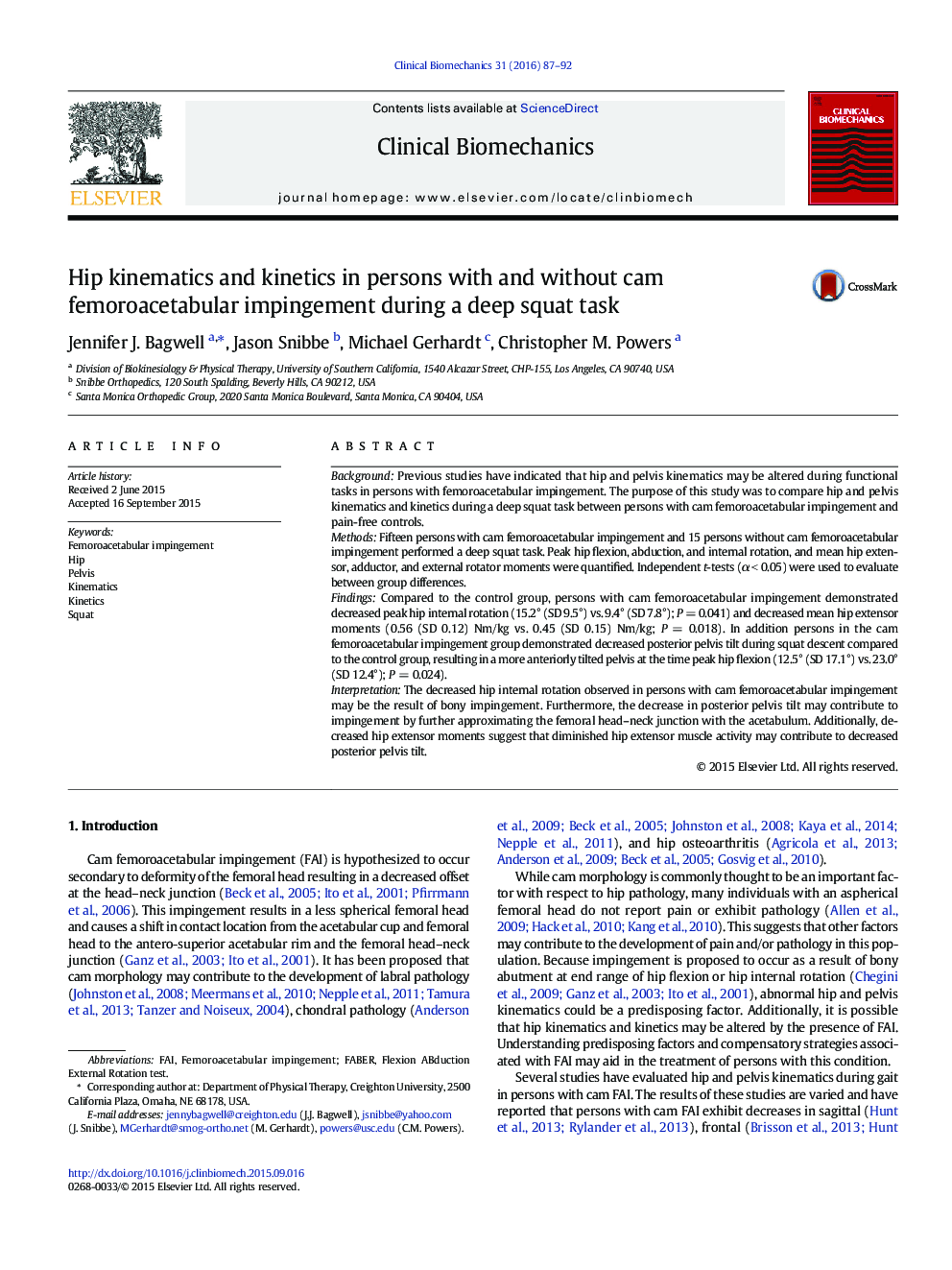| کد مقاله | کد نشریه | سال انتشار | مقاله انگلیسی | نسخه تمام متن |
|---|---|---|---|---|
| 4050173 | 1603747 | 2016 | 6 صفحه PDF | دانلود رایگان |

• Persons with femoroacetabular impingement demonstrated decreased hip internal rotation.
• Persons with femoroacetabular impingement had more anterior pelvis tilt at peak hip flexion.
• Persons with femoroacetabular impingement demonstrated diminished hip extensor moments.
• The degree of degree of cam morphology and peak hip internal rotation during the squat task were inversely correlated.
BackgroundPrevious studies have indicated that hip and pelvis kinematics may be altered during functional tasks in persons with femoroacetabular impingement. The purpose of this study was to compare hip and pelvis kinematics and kinetics during a deep squat task between persons with cam femoroacetabular impingement and pain-free controls.MethodsFifteen persons with cam femoroacetabular impingement and 15 persons without cam femoroacetabular impingement performed a deep squat task. Peak hip flexion, abduction, and internal rotation, and mean hip extensor, adductor, and external rotator moments were quantified. Independent t-tests (α < 0.05) were used to evaluate between group differences.FindingsCompared to the control group, persons with cam femoroacetabular impingement demonstrated decreased peak hip internal rotation (15.2° (SD 9.5°) vs. 9.4° (SD 7.8°); P = 0.041) and decreased mean hip extensor moments (0.56 (SD 0.12) Nm/kg vs. 0.45 (SD 0.15) Nm/kg; P = 0.018). In addition persons in the cam femoroacetabular impingement group demonstrated decreased posterior pelvis tilt during squat descent compared to the control group, resulting in a more anteriorly tilted pelvis at the time peak hip flexion (12.5° (SD 17.1°) vs. 23.0° (SD 12.4°); P = 0.024).InterpretationThe decreased hip internal rotation observed in persons with cam femoroacetabular impingement may be the result of bony impingement. Furthermore, the decrease in posterior pelvis tilt may contribute to impingement by further approximating the femoral head–neck junction with the acetabulum. Additionally, decreased hip extensor moments suggest that diminished hip extensor muscle activity may contribute to decreased posterior pelvis tilt.
Journal: Clinical Biomechanics - Volume 31, January 2016, Pages 87–92